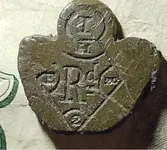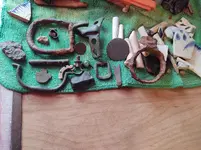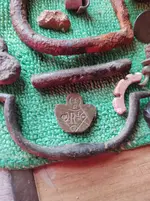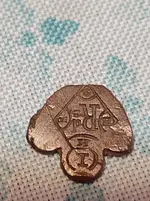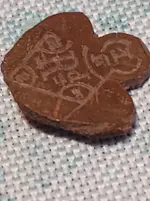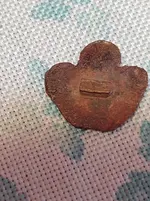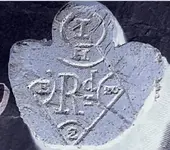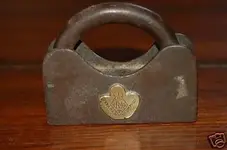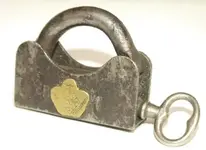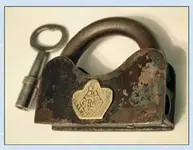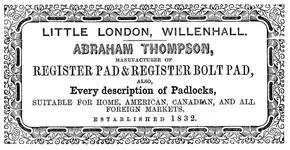It’s possible that this might be a weight, but those markings have nothing whatsoever to do with weights.
What you have is a British Patent Mark (also known as a Lozenge mark and sometimes incorrectly as a ‘kite’ mark) to indicate that the item carrying the mark is protected by a design registration. It’s of the style in use between 1842-1867. The mark can be read as follows:
At the top is the roman numeral ‘I’ which represents the class of goods for the registration. Class I is for items made from metal (Class II is for wood, Class III for glass and so on up to XIII for textiles).
Directly below, the letter ‘H’ is a year letter, in this case it denotes 1843.
At the centre, you have ‘Rd’, which is just an abbreviation for “Registered”.
Either side of the ‘Rd’ you have the letter ‘B’ and the number ‘20’. These denote the month and day of the registration. The ‘B’ is for October, so the design was registered on 20th October 1843.
At the very bottom, you have the number ‘2’ and this is the ‘bundle number’ (also known as a ‘package number’) which indicates how many different items are covered by a single design registration. So, this is one of two items made to the same design.
I’m a bit doubtful that it’s a weight (or at least that it was originally produced as such). If it were, why were there two items made to the same design? If it were part of a set of weights made to the same design, surely there would be more than two of them?
It’s possible that this was scavenged from some unknown metal item and cut to that size/shape for use as a weight, but my guess is that it's just a broken piece from something larger... perhaps the foot from some kind of container or vessel(?) When I have a bit more time I’ll do a search on British Patents for that date to try and identify what it was originally.

